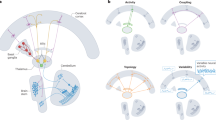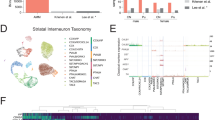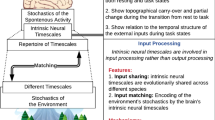Abstract
SINCE the investigations of Renshaw1 and Eccles et al.2 on the central inhibitory action of antidromic impulses in motoneuronal axons, indirect evidence has accumulated which suggests that a similar mechanism occurs at higher levels of the neuraxis3. Physiological identification of neural units responsible for such effects has proved to be technically difficult. Andersen et al.4 recently published records of presumed inhibitory interneurones from the ventrobasal complex of the thalamus.
This is a preview of subscription content, access via your institution
Access options
Subscribe to this journal
Receive 51 print issues and online access
$199.00 per year
only $3.90 per issue
Buy this article
- Purchase on SpringerLink
- Instant access to full article PDF
Prices may be subject to local taxes which are calculated during checkout
Similar content being viewed by others
References
Renshaw, B., J. Neurophysiol., 4, 167 (1941).
Eccles, J. C., Fatt, P., and Koketsu, K., J. Physiol., 126, 524 (1954).
Eccles, J. C., in The Physiology of Synapses (Academic Press Inc., Publishers, New York, 1964).
Andersen, P., Eccles, J. C., and Sears, T. A., J. Physiol., 174, 370 (1964).
Author information
Authors and Affiliations
Rights and permissions
About this article
Cite this article
MARCO, L., BROWN, T. Thalamic Inhibitory Interneurone. Nature 210, 1388–1389 (1966). https://doi.org/10.1038/2101388a0
Published:
Issue date:
DOI: https://doi.org/10.1038/2101388a0



